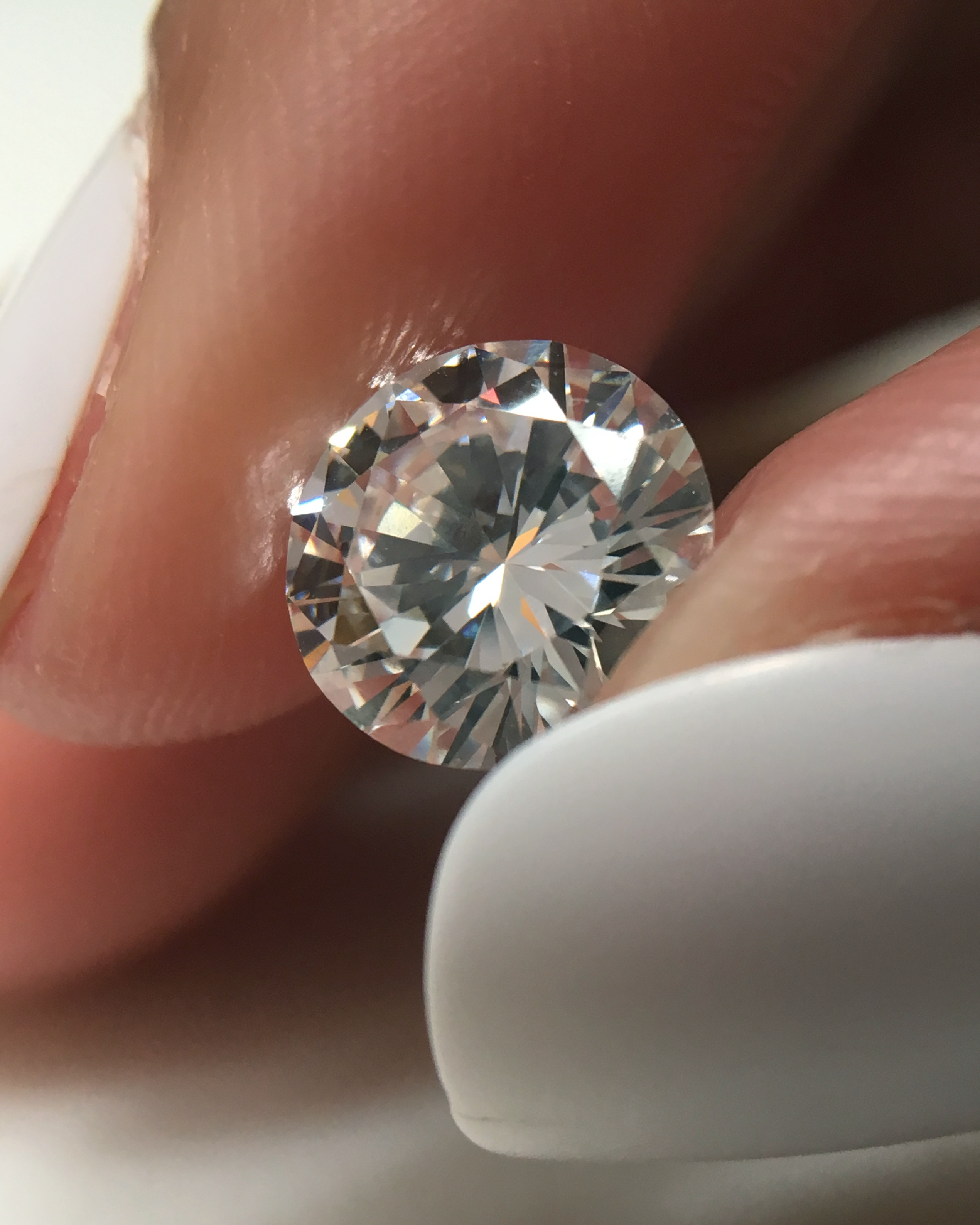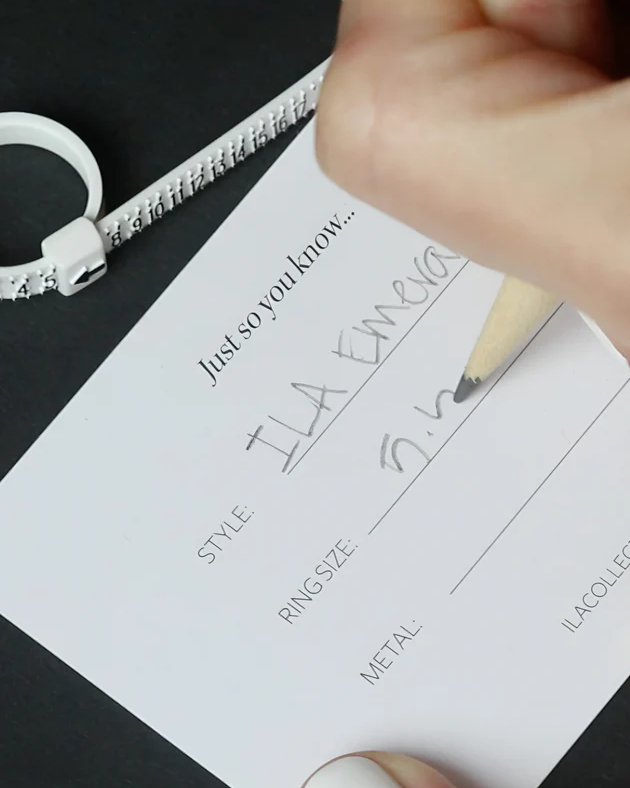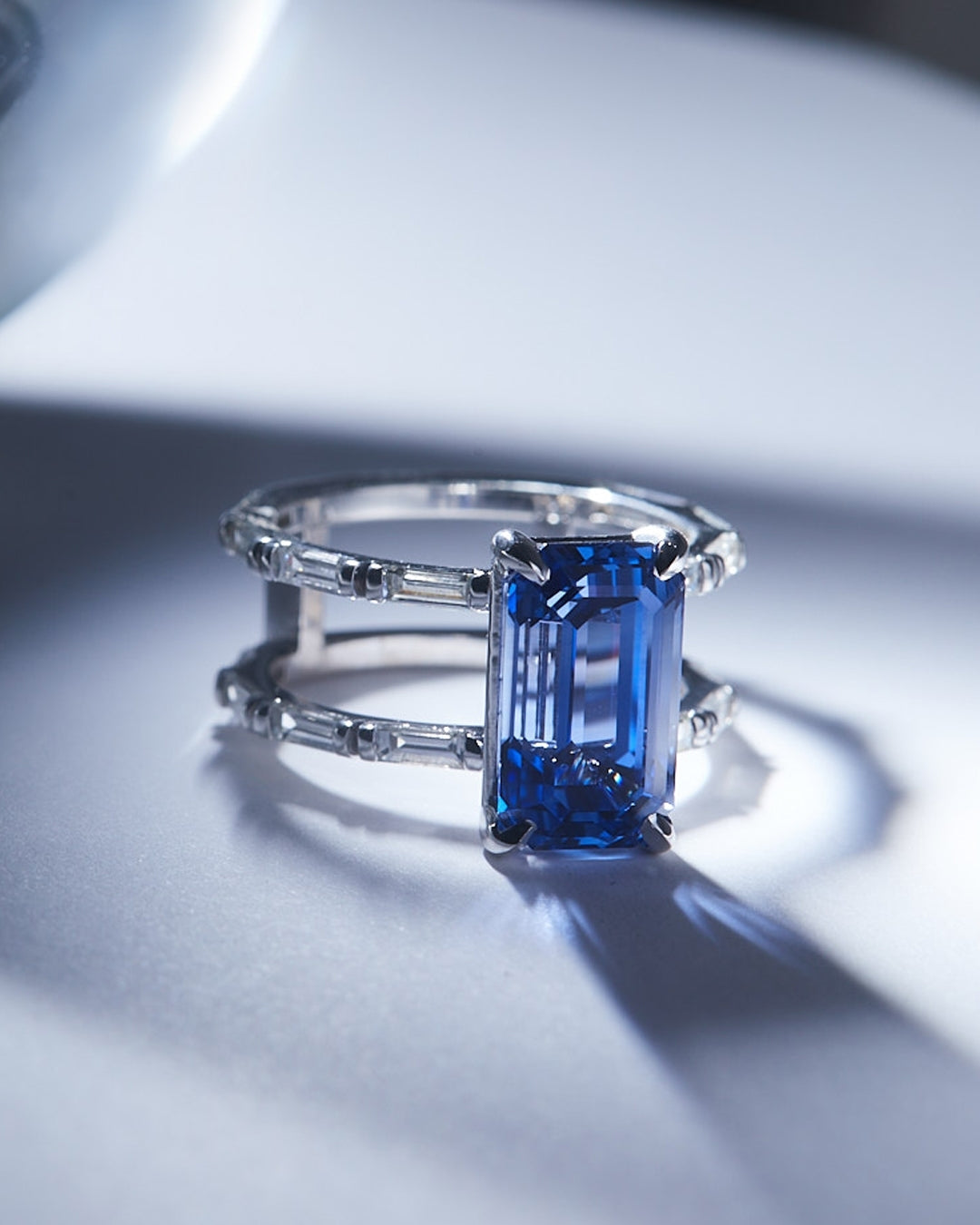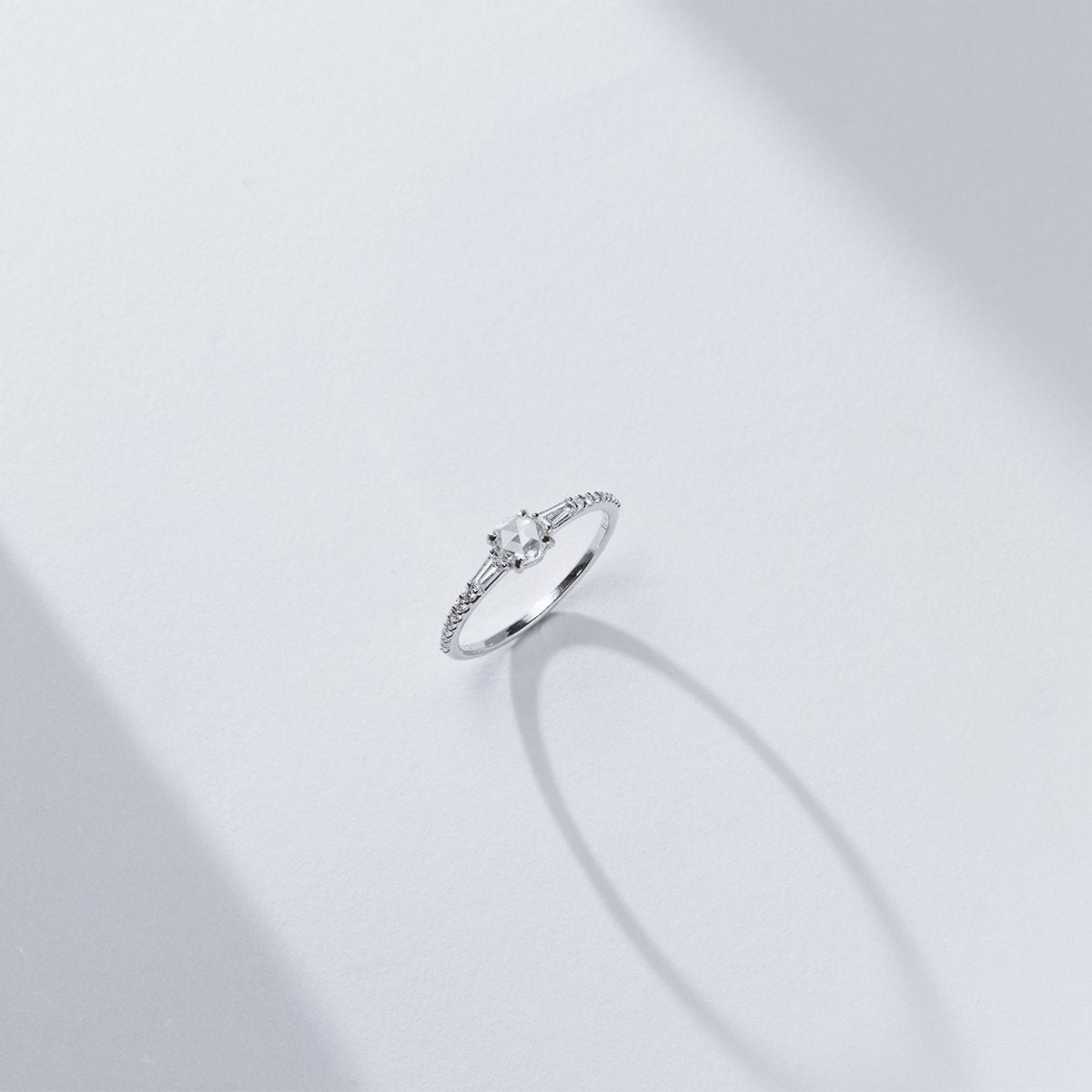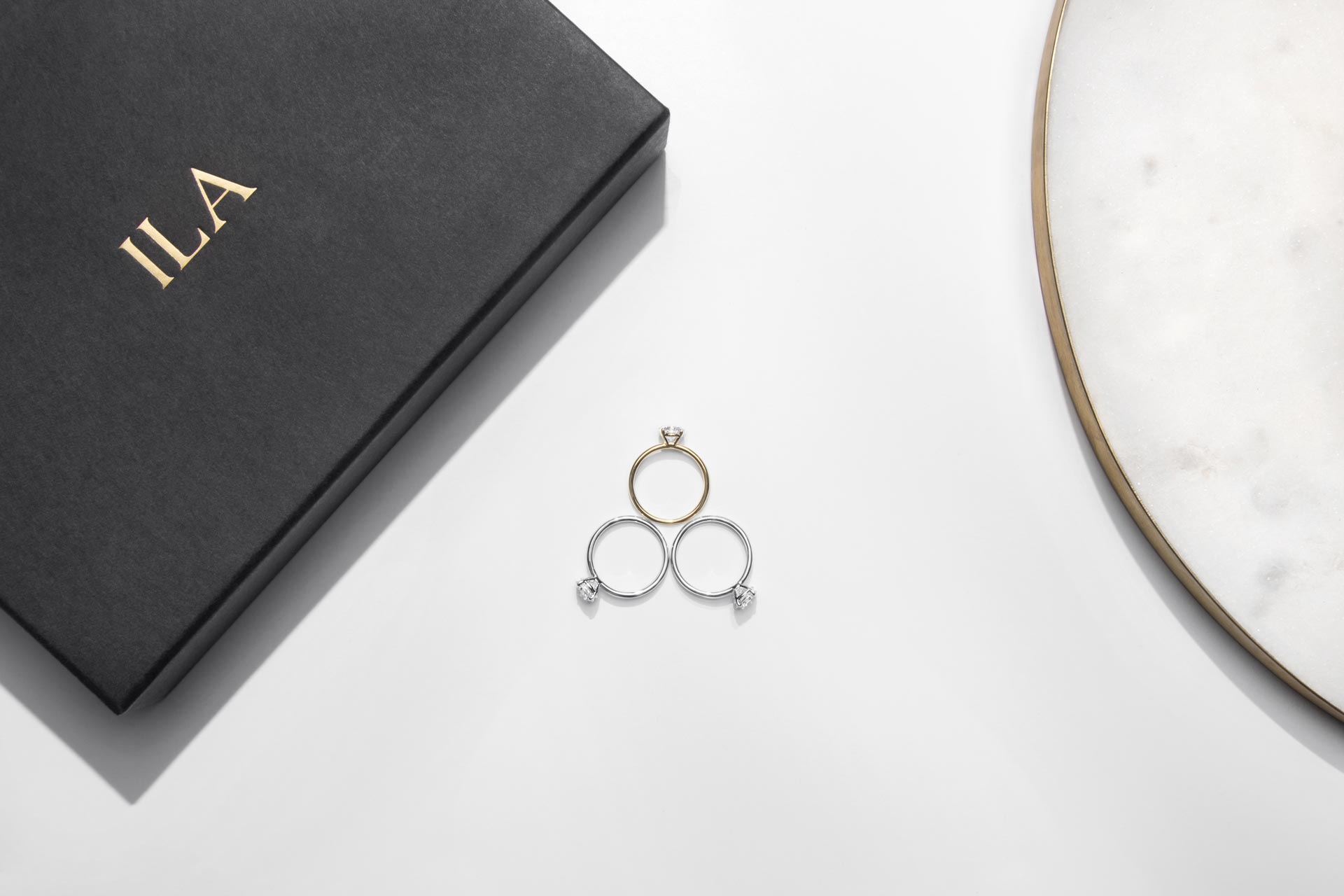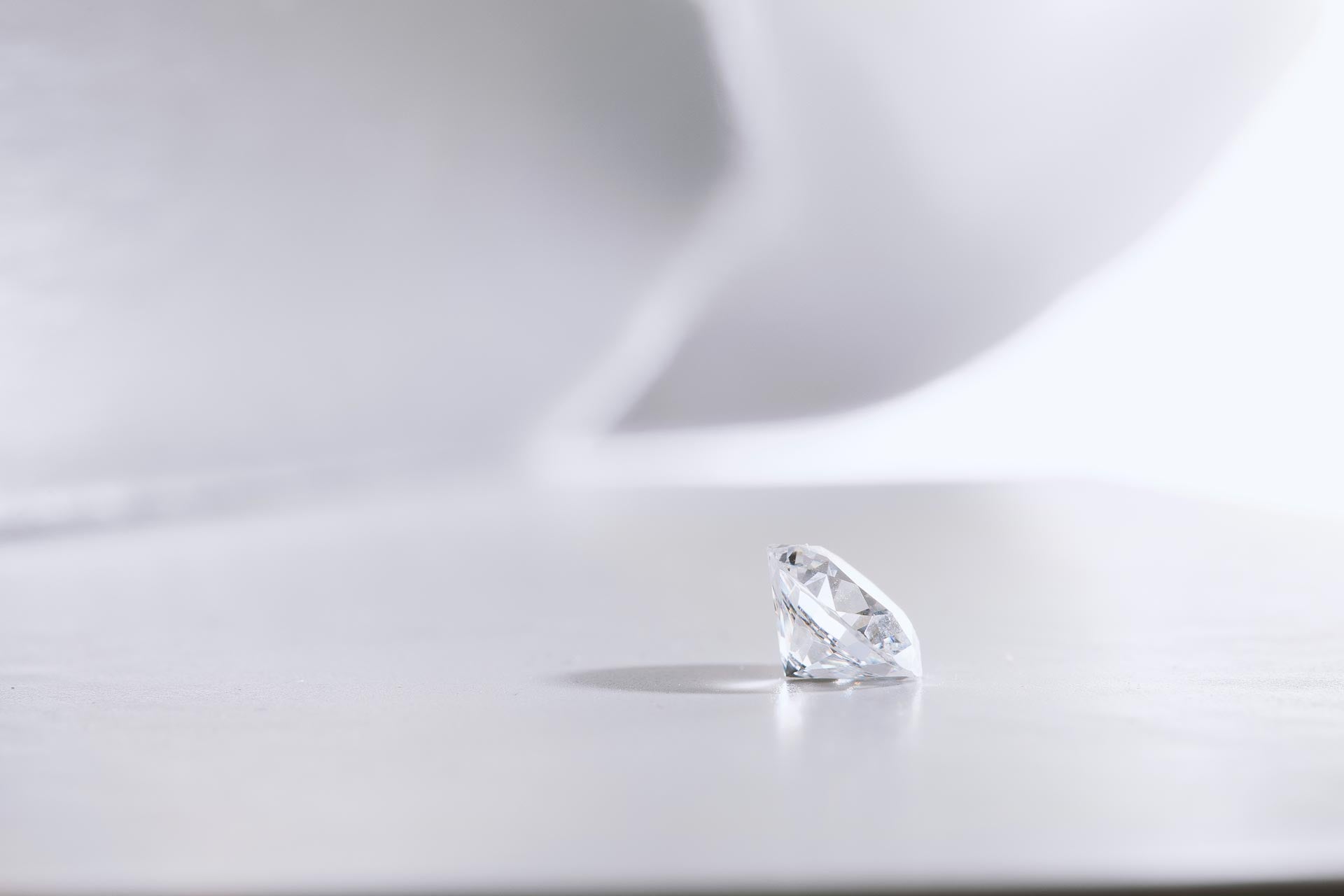
The 4C’s: How to Select the Right Diamond
If you’re shopping for an engagement ring, knowledge of the 4Cs will be extremely helpful in selecting the right diamond for your center stone. So, what are the 4Cs?
The 4C's of diamond grading are Cut, Color, Clarity, and Carat Weight. Together, these categories are a universally accepted method of describing diamonds.
A Brief History
Before 1953, when this system was officially established by GIA (the Gemological Institute of America), a diamond might have been described as “A, B, or C” quality, “AAA, AA, or A” quality, or even “I, II, III, or IV” quality. The inconsistency of these designations made it difficult to know what you were actually getting when it came to buying a diamond. Now, with the 4Cs, jewelers, diamond vendors, and jewelry buyers worldwide speak the same language of diamond quality.
Consider this your crash course in the language of diamonds. Let’s start with the simplest of the 4Cs: Carat Weight.
Carat Weight

The weight of diamonds and other gemstones are measured in carats (ct), using very sensitive scales that determine the weight of a precious stone to the thousandth of a carat.
The cost of a diamond tends to increase with its carat weight, because larger/heavier diamonds are more rare. All other things being equal, diamonds of equal weight would cost the same. However, each diamond is unique so the other C's also factor into the cost.
Color

The color grade of a diamond is really more about the lack of color: the closer to “colorless” a diamond is, the more rare and valuable it is. In the 4C system the color scale goes from D to Z, with D being the most desirable pure white/colorless diamond, and each letter grade getting the slightest bit more yellow as you advance along the alphabet to Z. (There are also “fancy color” yellow and brown diamonds but those get their own color-grading scale.)
Does this mean you need a “D-color” diamond? Not necessarily, though they are stunning. Diamonds graded D, E, and F are all considered “colorless” and look quite similar to the untrained eye. “Near-colorless” diamonds in the G-J range can still make good center stones for your platinum engagement ring, although I/J diamonds might appear slightly yellowish to the sharp-eyed. K is where the yellow tinge becomes more apparent. If you’re planning on setting your diamond in a yellow or rose gold ring, you can sacrifice a little on diamond color because the warm tone of the gold setting can hide the yellow-tinge of lower-color diamonds to some degree.
Remember, there are still two more Cs to factor into your diamond’s value: a D-color diamond with poor clarity or a bad cut grade is generally much less desirable than a G-color diamond with a good clarity rating and an excellent cut.
Clarity

The Clarity grade of a diamond makes note of the inclusions (internal flaws), blemishes (external flaws), or lack thereof (flawlessness) of the stone.
Flaws are not necessarily bad because some are not visible to the naked eye and can only be seen under the magnification of a microscope or jeweler’s loupe. Also, some inclusions or blemishes are on the edge of a diamond and can potentially be hidden if the stone is set strategically in the ring by a skilled jeweler. This is why a diamond grading report also makes note of the position, number, and visibility of flaws rather than just saying they exist.
This is how diamond Clarity is graded and notated:
- FL - Flawless - No flaws internally or externally
- IF - Internally Flawless - Some surface blemishes but no internal flaws
- VVS1 - Very Very Slightly Included - slight internal flaws in the bottom half of the diamond that can’t be seen by the naked eye
- VVS2 - Very Very Slightly Included - slight internal flaws in the top half of the diamond that can’t be seen by the naked eye
- VS1 - Very Slightly Included - slight internal flaws that are typically not visible to the naked eye
- VS2 - Very Slightly Included - slight internal flaws that are typically not visible to the naked eye, but are more poorly placed compared to VS1
- SI1 - Slightly Included - slight internal flaws that may be visible to the naked eye
- SI2 - Slightly Included - slight internal flaws that may be visible to the naked eye and are more poorly placed compared to SI1
- I1, I2, & I3 - Included - flaws that are visible to the naked eye, in varying degrees
Flawless diamonds are the ideal standard but, keep in mind that less than 1% of the world’s gem quality diamonds receive this grade, and only .001% are also D-color. Because of their rarity, these are the highest priced diamonds per carat.
Only 20% of gem quality diamonds are rated VS2 or above (flawless or the flaws are difficult to see).
A trained gemologist needs to use a powerful microscope to see the inclusions in a VVS diamond and can use a 10X jeweler’s loupe to see the inclusions in a VS diamond, although they may still be difficult to see. The inclusions in an SI1 diamond are easier to see with a jeweler’s loupe. SI2 clarity is where you can begin to see the inclusions with your naked eye but it varies from diamond to diamond at that grade. I-clarity inclusions can easily be seen with the naked eye.
The quality of the final C, Cut, can also affect the visibility of inclusions.
Cut
 You might think that “cut” refers to the diamond’s shape or style, such as rose cut vs. brilliant cut, or emerald cut vs. radiant cut, etc. You can click the links to read more about those diamond cut styles but, when it comes to the 4Cs, Cut refers specifically to the quality of the gem cutting of a round brilliant diamond: the proportion and symmetry of the gem and how well the angles of the facets reflect light within the stone to maximize the diamond’s brilliance.
You might think that “cut” refers to the diamond’s shape or style, such as rose cut vs. brilliant cut, or emerald cut vs. radiant cut, etc. You can click the links to read more about those diamond cut styles but, when it comes to the 4Cs, Cut refers specifically to the quality of the gem cutting of a round brilliant diamond: the proportion and symmetry of the gem and how well the angles of the facets reflect light within the stone to maximize the diamond’s brilliance.
This is the most difficult of the 4Cs to analyze, because part of it is science (such as the angles and proportions) and some of it is the grader’s subjective interpretation of visual effects known as Brightness (white light reflected from a diamond), Fire (the prismatic scattering of the white light), and Scintillation (the amount of sparkle and pattern of reflections within the diamond).
Some would argue that this is the most important of the 4Cs, because a properly cut diamond unleashes the full sparkly potential of the stone, making it appear whiter (more colorless), larger, and distracting your eye from any flaws.
The art and science of diamond cutting is graded by GIA as follows:

- Excellent - A diamond with this rating has the absolute best dimensions and proportions, resulting in the most sparkly and visually appealing gemstone.
- Very Good - This rating means that the stone is cut in a way that allows most of the light that enters the stone to be properly reflected, resulting in a diamond with lots of brilliance and fire.
- Good - The diamond is cut in a way that allows much of the light that enters the stone to be properly reflected.
- Fair - This rating means a lot of the light is escaping from the stone without being reflected so the sparkle is low.
- Poor - A poorly cut diamond lets too much light escape and ends up appearing dull.
If you’re selecting a round brilliant diamond center stone for your engagement ring, you’ll want it to have a Cut grade of at least Good.
Overwhelmed? Don’t Be. We took care of the hard work for you.

At ILA, we’ve simplified the process of finding your perfect diamond. Our team of MIT Scientists and Gemologists has developed AI (Artificial Intelligence) that plots over 100 data points for every diamond in our inventory.
The work of thousands of gemologists is completed by our AI in seconds, considering the 4Cs and more, to find the perfect diamond with the right balance qualities for you. Every time you search for a diamond online at ILA our AI runs in real-time to make sure we are only showing your the best options at the best prices.
The 5th C: Consciousness

We believe all diamonds must have a 5th “C”: Consciousness. You can purchase your diamond engagement ring from ILA with a clear conscience, knowing that we exclusively use ethically-sourced and conflict-free diamonds. Inspired by a deep appreciation of the planet’s resources, we have partnered with the most technologically advanced mines and cutting factories, all of which abide by the Kimberly Process. In doing so, we ensure that the exploration, sorting, cutting and polishing of our diamonds is undertaken in a professional, ethical, and environmentally-friendly manner.
We look forward to helping you find your perfect diamond ring!

